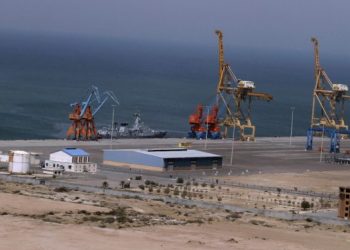China spent $240 billion bailing out 22 developing countries between 2008 and 2021, with the amount soaring in recent years as more have struggled to repay loans spent building “Belt & Road” infrastructure, according to a study published Tuesday.
According to the study by experts from the World Bank, Harvard Kennedy School, AidData, and Kiel Institute for the World Economy, about 80% of the rescue lending was made between 2016 and 2021, primarily to middle-income countries including Argentina, Mongolia, and Pakistan.
China has lent hundreds of billions of dollars to finance the construction of infrastructure in developing nations, but lending has decreased significantly since 2016 due to the failure of many projects to generate the expected financial returns.
“Beijing is ultimately trying to rescue its own banks. That’s why it has gotten into the risky business of international bailout lending,” said Carmen Reinhart, a former World Bank chief economist and one of the study’s authors.
According to the study, Chinese loans to countries with debt problems increased dramatically, from less than 5% of its whole foreign lending portfolio in 2010 to 60% in 2022.
With $111.8 billion, Argentina received the most. Pakistan came in second with $48.5 billion, while Egypt took in $15.6 billion. Less than $1 billion went to nine different countries.
$170 billion of the bailout money came from People’s Bank of China (PBOC) swap lines, which included Suriname, Sri Lanka, and Egypt. Chinese state-owned banks provided bridge loans and other balance of payments assistance totaling $70 billion. Both types of debt rollovers totaled $140 billion.
The report criticised central banks for perhaps artificially inflating their foreign exchange reserve figures by exploiting the PBOC swap lines.
According to Brad Parks, one of the report’s authors and the head of AidData, a research lab at William & Mary College in the United States, China’s rescue financing is “opaque and uncoordinated.”
Due to the risk, they pose to the balance sheets of Chinese banks, the rescue loans are primarily concentrated in nations with middle incomes, which account for four-fifths of their lending, while low-income countries are given grace periods and maturity extensions, according to the research.
China is negotiating debt restructurings with countries including Zambia, Ghana and Sri Lanka and has been criticized for holding up the processes. In response, it has called on the World Bank and International Monetary Fund to also offer debt relief.






